DO-IT News November 2016

Volume 24, Issue 4
Below are the articles of the DO-IT News November 2016 newsletter. These articles can also be seen all on one page at the Full Newsletter option.
Director's Digressions: Leadership of State IT Accessibility Policy Implementation at the UW
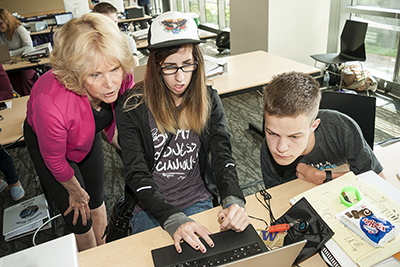
I am honored to be named the leader for implementing a new Washington statewide policy regarding accessible IT. Policy #188 requires that state agencies, including state-funded postsecondary institutions like the University of Washington (UW), take specific steps to ensure that IT procured, developed, or used is accessible to students, faculty, staff, and online visitors with disabilities. IT covered under this policy includes websites, documents, videos, and software.
Policy #188 builds on what my unit, Accessible Technology Services (ATS), has accomplished over the past couple decades with guidance from the IT Accessibility Task Force. To learn more about IT accessibility and find resources for making your own products accessible, visit the Accessibility Technology at the UW website.
The DO-IT Center programs have also hosted multiple capacity building institutes (CBIs)—full day meetings and working groups—on IT accessibility. Proceedings from these events can be found on the DO-IT website under Accessible Technology.
Policy #188, future DO-IT CBIs, and other events will lead to more campus-wide efforts to ensure that resources offered through IT are available to everyone. To stay up to date on these practices, join the Accessible Information Technology Community of Practice by emailing doit@uw.edu.
Insight Into Diversity Magazine Features DO-IT's AccessSTEM Projects
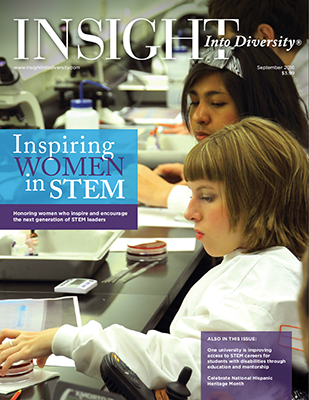
Insight Into Diversity’s September 2016 issue featured an article called “AccessSTEM Aims to Make STEM Careers a Reality for Students of All Abilities.” The colorful magazine also featured DO-IT Scholars on the front cover, completing a hands-on lab experience at a biomedical engineering company. Photos inside the issue showed twelve DO-IT participants engaging in science and mentoring activities.
The article reported that according to the U.S. Bureau of Labor Statistics, opportunities in science, technology, engineering, and mathematics (STEM) are projected to create more than nine million new jobs by 2022. It also shared data from the National Science Foundation that reveals that scientists and engineers with disabilities are more likely to be unemployed compared to their peers without disabilities.
DO-IT’s AccessSTEM Careers project is described in the article as a “prime example of a longstanding program with a mission to diversity STEM fields by preparing students with disabilities for postsecondary studies and the workforce.” Indeed, AccessSTEM provides mentoring, tutor support, career development, and leadership opportunities to students with disabilities interested in STEM fields. Funding comes from the National Science Foundation and the Mitsubishi Electric America Foundation.
As DO-IT Director Sheryl Burgstahler suggests: “It’s important to think about diversity within the classroom. Many people just think about the average student.” Sheryl’s comments highlight a growing awareness that it’s important to view disability as a diversity issue—much the same as embracing racial minorities, women, and other groups underrepresented in STEM fields.
According to their website, “Insight Into Diversity is the oldest and largest diversity magazine and website in higher education.” The 40-year-old magazine reportedly reaches hundreds of thousands of readers per issue.
The article can be viewed here. An accessible PDF can be requested from doit@uw.edu.
AccessEngineering Panel at the Society of Women Engineers Conference
This October, AccessEngineering co-Principle Investigator Kat Steele ran a panel discussion titled Disability, Diversity, & Engineering: Strategies to Support and Encourage Individuals with Disabilities in Engineering. It was held at the Society of Women Engineers Conference in Philadelphia. Panelists included Shiri Azenkot from Cornell Tech, Anat Caspi from UW’s Taskar Center for Accessible Technology, Yvette Pearson Weatherton from Rice University, and Grace Yukawa from the Rochester Institute of Technology.
Because of the panel discussion, disability was a visible part of the conference’s discourse on diversity in engineering. The session touched on strategies to support individuals with disabilities in a company or institution, tips and best practices for creating an inclusive environment, and the experiences of current engineering students, faculty members, and professionals with disabilities.
Richard E. Ladner: SIGACCESS Outstanding Contribution Recipient 2016
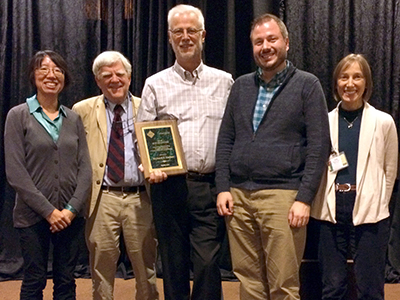
Join us in congratulating DO-IT collaborator and AccessComputing Principal Investigator Richard Ladner on receiving the 2016 Association for Computing Machinery (ACM) SIGACCESS Award for Outstanding Contributions to Computing and Accessibility. SIGACCESS is the ACM Special Interest Group on accessible computing. According to their website, “the award recognizes individuals who have made significant and lasting contributions to the development of computing technologies that improve the accessibility of media and services to people with disabilities.”
Richard’s research in accessibility has included projects such as the
In addition to his research, Richard’s contributions to the field include his collaborative work with DO-IT through AccessComputing and the Summer Academy for Advancing Deaf and Hard of Hearing in Computing.
Attending the USBLN Conference
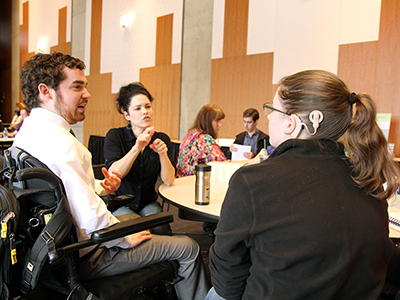
In September, I attended the US Business Leadership Network (USBLN) Conference in Orlando, Florida. The USBLN Conference is a great conference—it focuses on how businesses can approach disability inclusion, and other accessibility issues. Attendees are from disability owned business enterprises, as well as corporate partners like Apple, Facebook, Microsoft, and Google. Attendees listen to experts on disability inclusion and people with disabilities about their experiences, in the workplace, including acceptance and accommodations.
I attended this event for numerous reasons. As the Student Advisory Council (SAC) Secretary, I serve as a recruiter for new SAC members. This has allowed me to mentor students and recent graduates through the Rising Leaders program at the conference. I answer questions and concerns as well as give advice to these individuals while attending.
I was also assigned as the Innovation Lab team facilitator. The Innovation Lab is an activity for the Rising Leaders. Teams of seven to eight work together to come up with a problem that can occur in the workplace, as well as possible solutions to that problem. This activity allows the Rising Leaders to learn how to work in a team, brainstorm, be vocal, prepare a presentation, and network with professionals. During this activity, I facilitated by leading the teams and answering questions.
Lastly, I was a part of the CareerLink Mentoring Program, where I was assigned to a mentor who could help me prepare for graduating college and entering the workforce. My mentor was able to answer questions on preparing to seek employment and how to best approach the professional world. While meeting with an on-campus career counselor can be helpful, they often don’t know how to answer my questions about how to effectively incorporate my disability in the workplace. My mentor had answers to those questions and helped me prepare myself on how to present myself, as well as my disability, to possible employers. Being a CareerLink Mentee allowed me to meet my mentor in person, as well as network with an entire community of mentors and mentees. I connected with people that my mentor thought I should network with. I left the conference with a network of professionals who offered to help me with reviewing my resume, providing feedback on my interviewing skills, and connecting me with recruiters in their companies.
The USBLN Conference provided a great opportunity to learn and utilize leadership skills as well as meet both mentees and mentors that will help in my professional development.
Quorum Summer Camp at UW
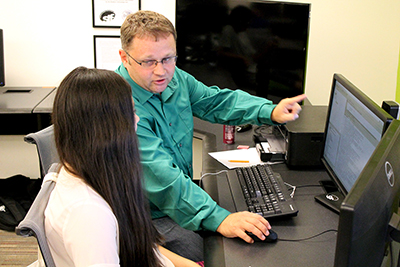
AccessCSForAll PI and assistant professor of computer science at the University of Nevada, Las Vegas Andreas Stefik came to Seattle last summer to lead a summer camp utilizing Quorum, the programming language that he developed. Held as part of the Computer Science and Engineering Department’s Dawg Bytes summer camps, twelve campers learned how to program and design 3-D games in Quorum. The campers were taught different aspects of Quorum coding and then able to apply it in their games, all while getting feedback from instructors and teaching assistants. At the end of the week-long program, campers demonstrated the games to each other and their parents.
As a result of the experience with campers, Stefik will continue to develop tools and resources for the Quorum programming language. Quorum is designed to be accessible to individuals with disabilities, which makes it unique amongst most programming tools used in K-12 settings.
My Internship Experience
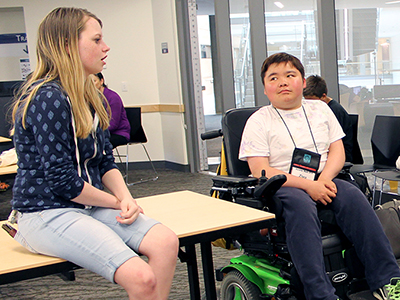
I’m a 2013 DO-IT Scholar and was a 2016 Summer Study Intern, and now I’m a freshman at Seattle University and DO-IT Ambassador. This past summer, something caught my eye on the DO-IT Chat email list. It was an internship opportunity with an organization called Rooted in Rights (RiR).
Though it has been impressed upon me how important internships are during college, I don’t think that I fully understood that concept until recently. In college classes you learn information and critical thinking, but it takes stepping into the real world and having genuine experiences to know where your true strengths, weaknesses, and passions lie. When I saw the internship opportunity, I was intrigued. Before the internship, I had discovered my love for advocacy through my personal blog about blindness. RiR specializes in media and campaigning for the rights of people with disabilities.
Though I was excited to apply, I was also nervous about the possibility of being chosen for this internship. It would be my very first “real job,” and I would have to balance the internship with my studies. I would be working with video editing, and though I am tech savvy, I had never worked with the specific programs that RiR uses. Just like anyone else applying for a job, I was worried about whether or not I would be chosen, and how my life would change if I were.
As a person with a disability, I had additional concerns. How would my vision affect my ability to do the job? How would I travel to work? And above all, I felt pressure personally to be an example of how successful people with disabilities can be.
Despite these worries, I went forward with the encouragement of friends and family. The application and interview process were very beneficial. Proper resume, cover letter, and professional correspondence writing are invaluable skills that I was able to refine while applying for this internship. The best way to improve your interview skills is to participate in interviews, and applying for RiR gave me that opportunity as well.
The second week of my first quarter in college, I interviewed for the position. I was called back later the same week and offered the position. Through this internship, I learned the basics of how to edit video and convert media into different formats with professional software. I also gained a host of professional skills such as working with a timekeeping system, using a large database, and email etiquette. My internship is also providing opportunities to connect with others and grow my professional network. I now have new skills and confidence that I know will take me far in the future, and I’m excited to see what else I will learn from RiR and where this internship will take me.
It’s never too early to start looking for an internship. This kind of experience allows you to decide what path you want to take and provides the tools to be successful in future careers and other endeavors.
Workforce Recruitment Program
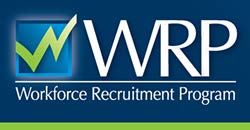
The Workforce Recruitment Program (WRP) is a recruitment and referral program that connects federal and private sector employers nationwide with highly motivated college students and recent graduates with disabilities. This fall, thirty applicants will personally interview with a trained WRP federal agency recruiter at the University of Washington in hopes of connecting with great summer or permanent opportunities. Participants have a wide range of career interests and backgrounds.
During the interview process, students receive assistance developing a federal version of their resume, preparing for the interview questions and practicing via mock interviews. Participants who complete WRP interviews are included in a national database that captures their resume, transcripts, highlighted skills, locations where they would like to work, their schedule A status and a summary of their recruiter interview. The student information in this database is made available to employers for one year. During that time, employers reach out to participants and invite them to apply for open positions. Since it’s beginning in 1995, over 6,000 participants have received temporary and permanent employment through WRP.
“The WRP program not only helps students find temporary or permanent employment, but it also offers resources like having you resume posted on their database, which allows students to be contacted by employers. Since being a part of the WRP program I have been contacted by the Department of the Army, Veteran Affairs, and a private recruiting firm in Philadelphia. These resources are beneficial because they let you know there are many options available,” Said Shelby Keith, a DO-IT Ambassador and WRP participant.
DO-IT’s support of student participation in this event was funded by the Mitsubishi Electric America Foundation (MEAF) as a part of the AccessSTEM Careers project. For more information on WRP, consult their website. WRP is managed by the U.S. Department of Labor’s Office of Disability Employment Policy (ODEP) and the U.S. Department of Defense’s Office of Diversity Management and Equal Opportunity (ODMEO).
Fall is the Scholarship Season
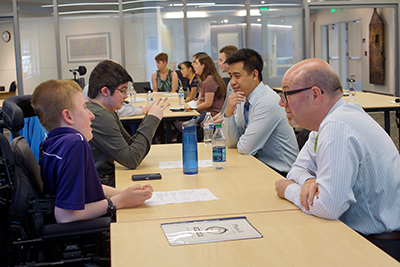
Think ahead! Fall is the time to finish your scholarship applications. Most deadlines fall between October and December. Start now to make sure you don’t miss out on some great funding opportunities. An important part of preparing for college is figuring out how to pay for it.
On the DO-IT Scholarship website you will find information about scholarships, including deadlines, award amounts, and eligibility. For more funding strategies for college, consult the DO-IT publication College Funding for Students with Disabilities. Contact doit@uw.edu if you need assistance with essays and letters of recommendation.
Studying Abroad in London
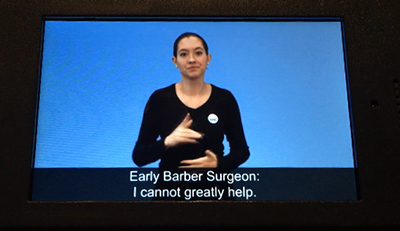
I went to London this summer to study abroad. I was in London for five weeks, and I stayed with a homestay family that was a 30 minute ride from London on the Tube. I took three classes, learning about the theater, architecture and art, and the culture of London. I also traveled to Hampton Court Palace, Brighton, and Stratford-Upon-Avon.
Inside and outside of class, I was observing London and how it compares to home in the United States. London is a fantastic hub for history; many places there are centuries old and retain original architecture. For example, London used to just be a square mile, with houses surrounded by stone walls to protect them from outside attacks. Some of these still stand. However, London’s preservation of history leads to less accessibility for people with disabilities. Many of the theaters in London had stages that were too small to accommodate sign language interpreters, which I needed to fully understand and enjoy the plays. The one time I could get interpreters, they stood on a separate platform next to the stage.
Yet, I was happy to see that new and rennovated buildings were accessible. At the Wellcome Museum, they had an elevator, large print descriptions of all their exhibits in booklets, audio tours in British Sign Language (BSL), and captions. Most of main London also had curb cuts, though these were not marked and often blended in. Crosswalks were another story. Some were marked and required cars to stop, but many weren’t marked and expected the pedestrian to yield to traffic. However, sometimes cars would stop for wheelchair users or people who may be slower walkers.
For accessibility, the Tube was also an interesting case: I noticed that there were more limited accessible wheelchair stops in central London than there are in the outskirts of London ranging from Zones 2-6. However, a few certain Tube lines had more wheelchair accessible spots than others. There were also smaller busses that focused on transporting people with mobility impairments.
London is an amazing place. Its culture is very diverse and people are understanding and open-minded. London is somewhat ahead of the United States in some ways like providing audio tours with the option of having an interpreter or putting out large print booklets for the public to use rather than having the person ask for one. However, London is quite the dichotomy—it is a very forward moving city that promotes accessibility for both its residents as well as tourists, but it also wants to preserve its history and landmarks, most of which are not very accessible.
Though London is pretty accessible, I did feel very lucky to be a citizen in the United States and protected under the Americans with Disabilities Act. I enjoyed the study abroad not only for myself and my education, but as a person with a disability. I was able to see how another country approaches the idea of disability, and I am eager to experience what other countries offer. I challenge people with disabilities to study abroad; I believe they would get a life-changing experience as a student and a person with a disability. Challenge what you know and have experienced with what you don’t know and haven’t experienced.
Inclucity
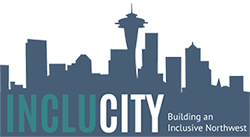
“What will it take to break down the barriers experienced in our communities and create a truly inclusive Northwest?” This is the question posed by Provail at their new event, called Inclucity. Inclucity 2016 took place on October 20, at McCaw Hall in Seattle Center. It was an opportunity for our community to learn about the challenges and successes of creating an inclusive Puget Sound.
DO-IT hosted an interactive booth alongside other local businesses and agencies. Prior to the event we were asked to complete the following prompt, “In an inclusive community…” Being the only organization to represent the academic side of this issue, we felt our statement should focus on higher education. We decided to keep our statement simple: “In an inclusive community, students with disabilities have equal access to higher education.”
To support this sentiment, DO-IT shared resources on preparing for college, assistive technology, and universal design. Participants were able to view videos, discuss ideas and options, and walk away with resources for accessing college.
The attendees of the event were a mix of community members, families, agencies, corporate employee representatives, and of course, people with disabilities. Inclucity provided a setting for community members to have conversations about opportunities for people with disabilities. Topics such as jobs, recreation, economic equity, physical access, agency support, and education were highlighted in particular. We spoke with many families who appreciated having discussions about higher education because people with disabilities are often discouraged from attending school or educational programs after high school. One parent told us that she wanted her son to have the opportunity to be a “lifetime learner,” but expectations are set so low for him that he never feels encouraged. This parent captured why it’s important for events like this to exist, because people with disabilities should have a variety of options, and higher education needs to be more equitable in order for us to be a truly inclusive community.
Universal Design in Higher Education: Promising Practices Call For Articles
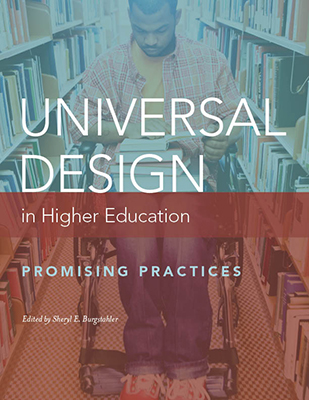
In DO-IT’s online publication, Universal Design in Higher Education: Promising Practices, practitioners share promising practices related to the application of universal design in postsecondary education settings. This collection of promising practices complements the more general content in the printed book, Universal Design in Higher Education: From Principles to Practice, which recently published a second edition under Harvard Education Press.
This complementary publication is available free online. It can be freely copied and distributed as a book or in part for noncommercial, educational purposes. The collection will continue to grow as more articles are submitted.
Articles may be submitted at any time to udhecop@uw.edu. Submitted articles should include specific ways practitioners and researchers have applied universal design in postsecondary settings along with evidence of success. They are peer-reviewed by members of the Universal Design in Higher Education Community of Practice, and if accepted, edited by DO‑IT. Articles selected for the online resource are freely available on our website. Authors must agree to these conditions while retaining copyrights to their individual contributions. For author guidelines, consult the preface of the book.
About DO-IT
DO-IT (Disabilities, Opportunities, Internetworking, and Technology) serves to increase the successful participation of individuals with disabilities in challenging academic programs and careers, such as those in science, engineering, mathematics, and technology. Primary funding for DO-IT is provided by the National Science Foundation, the State of Washington, and the U.S. Department of Education.
For further information, to be placed on the DO-IT mailing list, request this newsletter or other materials in an alternate format, or make comments or suggestions about DO-IT publications or web pages, contact us at
DO-IT
University of Washington
Box 354842
Seattle, WA 98195-4842
doit@uw.edu
www.uw.edu/doit/
206-685-DOIT (3648) (voice/TTY)
888-972-DOIT (3648) (toll free voice/TTY)
509-328-9331 (voice/TTY) Spokane
206-221-4171 (fax)
Founder and Director: Sheryl Burgstahler, Ph.D.